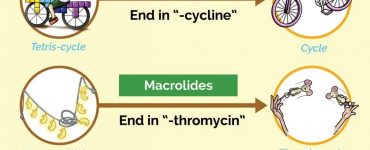I just finished my first week of classes in medical school, and the most I can say is: boy oh boy is it FAST! When people say it’s like nothing you’ve ever experienced before? They’re not kidding. The rate at which they throw information at you is so rapid that you haven’t even caught it before they toss the next information your way. While it sounds intense, I’m actually enjoying the constant busyness. It’s like a race (and exercise is great, right?)

I have two main classes that consistently compete for my attention: anatomy and biology (on steroids). “Anatomy” is pretty self-explanatory, but “biology (on steroids)” is a combination of every undergraduate biology class you can imagine and then multiplied by 10. As a biomedical engineering major in college, both of these are pretty different from what I’m used to. Needless to say, I’ve spent a lot of this week figuring out how I’m going to tackle medical school.
You know how people say that they go to college to find themselves? The first week of medical school classes is like that too because you have to find your learning self. You need to understand how you learn, how best to study, and when to work. It’s primarily a trial and error process; I have so many tools at my disposal, but I don’t know which ones will fit me best. Honestly, I’ve been analyzing myself a lot this week. It’s like I’m my very own science experiment (hooray for research)!
LECTURES
The hardest thing for me has been trying to prepare for lecture ahead of time. A short lecture in medical school is 25 PowerPoint slides long. (Usually, a normal lecture for me are 40-50 slides.) On a day with a light load we’ll have 3 lectures, but on busier days it goes up to 6. If you do the math, that’s 75 slides on a good day (there are rarely good days) and 150 on a rough day, IF we only had short PowerPoints (which we don’t).
BASICALLY, what I’m trying to say is that there is a LOT to cover on a daily basis. Not only that, but a lot of it (at least for me) are things I thought I already understood but turns out I don’t know them as well as I thought (isn’t that the worst?). For instance, I was sitting in a lecture about cell membranes the other day. CELL MEMBRANES… basic, right? Bilayer, hydrophobic tails, hydrophilic heads. I thought I had it in the bag. WRONG. There are a bunch of different types of lipids that also have a bunch of different variants and millions of exceptions to thousands of different rules (and I need to learn all of them).
To try and stay ahead of the game, I try to review all lectures before we go over them in class. By “reviewing,” I mean retyping all the PowerPoint slides in my own words and organizing the information in my own way. I thought this was a pretty good idea for my first two days of school…but now I’m not so sure. It takes up a lot of time (even with my 70 WPM typing speed), and I find myself getting so caught up in trying to finish that I don’t pay attention to what I’m typing. Sometimes I hope that the information will just flow into my mind via osmosis and will pop up when I need it, but that hasn’t proven to be real (although I have learned things in my dreams before… so maybe that’ll happen one day).
Then when I’m in class, I will whiz through the PowerPoint slides again alongside our instructor and pretty much try to transcribe what it said during the lecture under each slide. (Side note – since attendance is mandatory for most of our lectures, the symphony of 100+ medical students’ clicking keyboards literally sounds like rain falling on a building. Just thought I’d share.)
After classes, I go home and begin typing the next day’s lectures. I have not been able to finish all of them in one night though, so I get up early every morning to finish everything. (The most calming part of my day is driving to school before the sun has fully risen because the quiet gets me into the studying mood.)
My daily schedule looks something like this:
• 5:00 am: Wake up and get ready for school (#packinglunches)
• 6:00 am: Find a study room on campus and review lectures while blasting upbeat dance music (it makes studying more exciting!)
• 7:40 am: Run to the lecture hall to get a good seat
• 8:00 am: Classes begin
• 11:00 am: Lunch break (I usually go to meetings, review lectures, and try to talk to at least two classmates [so I don’t lose my human socializing abilities].)
• 1:00 pm: Classes resume
• 3/4/5 pm: Classes end, and I run home (some days are longer than others)
• Until 10/11 pm: Study and then go to sleep
Now with the weekend here, I’m wondering if typing lectures out is even worth it because I don’t always understand what’s going on in class. (We learned about microtubules, microfilaments, and intermediate filaments a few days ago and I could barely understand all of the clicker questions, so maybe I need to find a different pre-reviewing technique.) I’ll try out a few other methods and let you all know what it most efficient!
ANATOMY LAB
Everyone who comes to medical school has different levels of experience and comfort with cadavers. I had gone through a partial cadaver dissection during undergrad but only had the opportunity to dissect the torso and had a lot of surgeons and residents guiding me through what to do.
In medical school, however, you get the opportunity to work with the fully preserved body of a donor. What I was most worried about was seeing the face of our donor because (for me) that really hits home the humanistic aspect of this entire experience. Thankfully, I was fine, and our first dissection was very pleasant!
I know when some people encounter cadaver dissections, their perception of death changes. I have had others ask me if this was the case for me and I have to admit that it’s not. In fact, working with our donor changed my perception of life. Think about it! For someone to live their life and then be generous enough to allow medical students to learn from their bodies after their death is so noble! What an impactful gesture because they are not only helping us as students, but our future patients as well. In fact, I think of my donor as my first patient.
Learning from a human body is much different than learning from a textbook. Things are more ambiguous in the body, and every one has little quirks; nothing is ever perfectly symmetrical or clear. I think it is cool though that adipose tissue actually is yellow, some fascia are actually white, and muscles do have somewhat of a maroon hue (just like in textbook pictures). One thing’s for sure, I’ll be spending a lot of extra time in the lab practicing (hooray)!
EXTRACURRICULAR ACTIVITIES
Since it’s only the first week, I haven’t had too much involvement in student organizations just yet. Right now it’s pretty much info session season, and there are a few executive boards I have my eye on (#neuro)! I think it’s important to be involved in activities outside of lab and lecture; how else will you show residency programs you’re balanced?
Also, I just met my M2 mentor, and she is literally the best! If you’re in school now, I strongly encourage you to not only connect with your classmates, but also your upperclassmen! They are a treasure trove of knowledge and advice (and most importantly reassurance).
That’s all for now! Now that it’s the weekend, I really need to go and learn all 500 PowerPoint slides from this week! I’ll let you know how it goes.
Have a happy week and GOOD LUCK!













